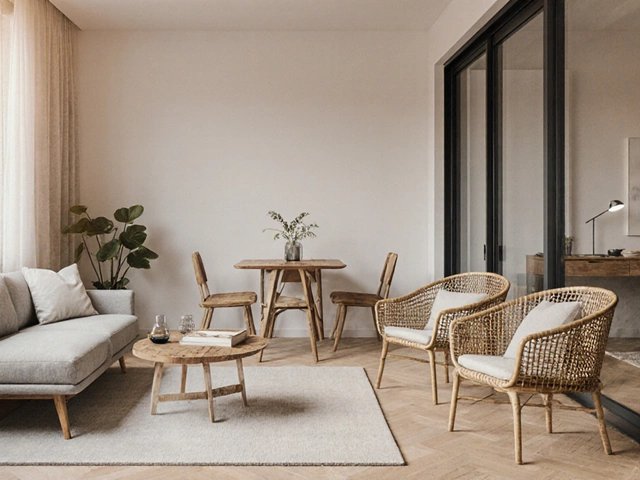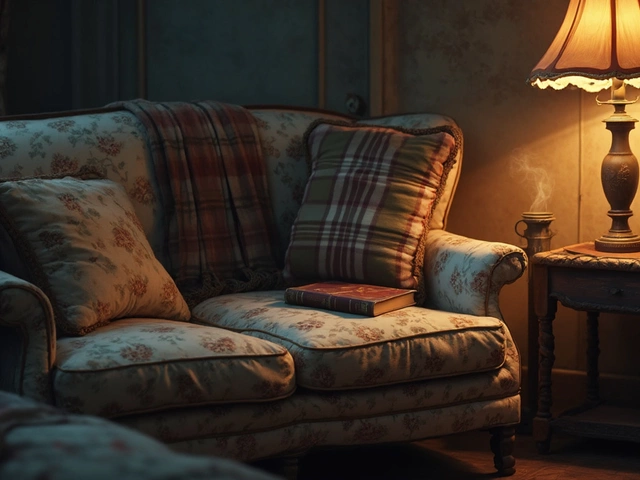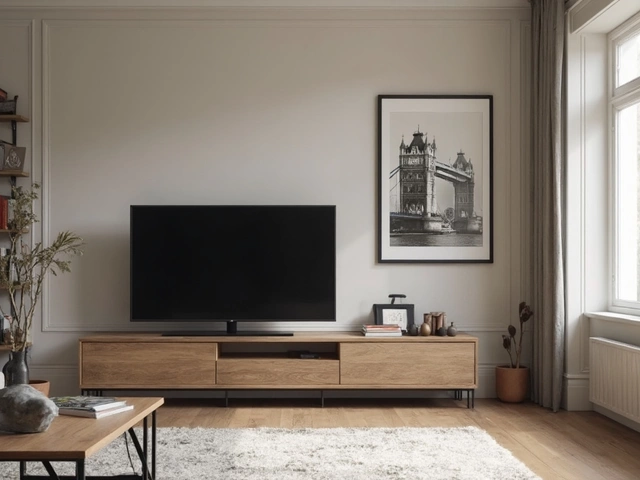Patio Furniture Protection Calculator
Save Money on Your Patio Furniture
Find out how much you could save by properly protecting your outdoor furniture. Based on industry studies showing uncovered furniture loses up to 60% of lifespan.
Annual Damage Cost
$0
Cost of premature replacement
Your Protection Cost
$0
Covers + maintenance
Net Savings
$0
SavingsAnnual benefit
Example: Uncovered furniture in coastal areas loses up to 60% of lifespan. Covering saves you $300-$800 annually.
Pro Tip
Store cushions indoors when not in use. This is the single most effective way to extend furniture life—prevents mold and foam breakdown.
Let’s be honest-covering your patio furniture every night feels like a chore. You’ve just finished dinner outside, the sun’s down, and now you have to wrestle a heavy tarp over your chairs and table? It’s easy to think, ‘It’s just one night. It’ll be fine.’ But if you want your outdoor furniture to last more than a couple of seasons, skipping covers night after night is one of the biggest mistakes people make.
Why Covering Matters More Than You Think
Outdoor furniture isn’t built to sit in the open air 24/7. Even high-quality materials like powder-coated aluminum, teak, or all-weather wicker degrade over time when exposed to the elements. Rain doesn’t just leave water spots-it seeps into seams, cushions, and joints. Morning dew turns into mildew. UV rays from the sun bleach colors and crack plastics. A single heavy storm can ruin what months of sun exposure slowly wore down.
Studies from the Outdoor Furnishings Manufacturers Association show that furniture left uncovered year-round loses up to 60% of its lifespan compared to properly protected pieces. That’s not a small difference-it’s the gap between five years and twelve.
What Happens If You Don’t Cover Your Furniture
Think about your favorite cushion. The fabric looks fine today. But after three months of nightly dew and occasional rain, the fibers start to break down. Moisture gets trapped inside the foam, and mold grows where you can’t see it. By fall, the cushion smells musty, the color’s faded to gray, and the zippers won’t close right.
Wood furniture like teak or eucalyptus doesn’t rot overnight, but it does turn gray faster without protection. That’s not the ‘rustic look’-that’s wood drying out and splitting. Metal frames collect moisture in hidden corners, leading to rust spots that spread. Even plastic and resin wicker can become brittle in freezing temperatures if it’s constantly wet.
And don’t forget pests. Birds nest in uncovered chairs. Squirrels chew on cushions for padding. Ants and spiders build colonies in the crevices. Covering your furniture isn’t just about weather-it’s about keeping unwanted guests out.
When You Should Cover Your Furniture
You don’t need to cover your furniture every single night. But you should cover it when:
- Forecast calls for rain, snow, or hail
- Temperatures drop below freezing, especially overnight
- There’s heavy pollen or tree sap in the air
- You’re going away for more than a few days
- Wind is strong enough to blow debris onto your furniture
For most people in temperate climates, that’s about 3-4 nights a week during spring and fall. In winter, cover everything every night if you get frost or snow. In summer, you can skip it most nights-unless you live near the coast where salt spray is constant.

What Kind of Cover Works Best
Not all covers are created equal. A cheap plastic tarp from the hardware store might keep off rain for a week, but it traps moisture underneath. That’s worse than no cover at all.
Look for covers made from:
- 600D polyester-thick, tear-resistant, and breathable
- Waterproof with a breathable membrane-keeps rain out but lets trapped moisture escape
- UV-resistant coating-stops fading and cracking from sun exposure
- Snug fit with elastic hems or straps-won’t blow off in wind
- Zippered or Velcro closures-keeps out critters and leaves
Brands like Classic Accessories, KingCamp, and SONGMICS make covers that fit common furniture sets. Measure your pieces before buying. A cover that’s too loose lets water pool. One that’s too tight stretches and tears.
How to Use Covers the Right Way
Putting a cover on is simple. Using it right takes a little know-how.
- Let furniture dry completely before covering. Wet fabric + wet cover = mold factory.
- Remove cushions and store them indoors or in a dry storage bin. Even the best cover can’t protect cushion cores from moisture.
- Use furniture risers or blocks to lift pieces off the ground. This stops water from pooling underneath.
- Secure the cover with bungee cords or straps. Wind is the #1 reason covers fail.
- Check under the cover every few weeks. Look for moisture, mold, or pests.
- Wash the cover every season with mild soap and water. Don’t machine wash unless the label says it’s safe.
Alternatives to Daily Covering
If covering every night feels overwhelming, here are smarter ways to protect your furniture:
- Store cushions indoors. This is the #1 thing you can do to extend cushion life. Even a dry garage or closet helps.
- Use weather-resistant furniture. Look for pieces with quick-dry foam, Sunbrella fabric, or marine-grade aluminum. These won’t need as much protection.
- Install a pergola or awning. A roof over your patio cuts down on rain, sun, and debris. It’s a one-time cost that cuts cover use by 80%.
- Choose all-weather materials. Recycled plastic lumber, powder-coated steel, and HDPE wicker need almost no covering. They’ll last 15+ years with just an occasional wipe-down.

Real-Life Example: Two Patios, Two Outcomes
Two neighbors bought identical sets from the same store in 2022. One covered everything every night during rainy season. The other only covered it when it rained. By 2025:
- The first neighbor’s furniture looked brand new. Cushions were still bright. Metal showed no rust. No mold. No smell.
- The second neighbor had to replace all four cushions, two chairs, and one table leg. The cost? $800. Plus the time spent shopping and installing.
That’s not a coincidence. It’s basic maintenance.
When You Can Skip the Cover
There are times when covering is overkill:
- Hot, dry summer nights with no rain forecast
- When you’re using the furniture daily and it dries out quickly
- If you have a covered patio or gazebo
- If your furniture is made of true all-weather materials (like HDPE wicker or marine-grade aluminum)
But if you’re not sure? Cover it. It’s cheaper than replacing.
Final Thought: It’s About Smart Habits, Not Perfection
You don’t need to be a perfectionist. You don’t need to cover your furniture every single night. But you do need to be consistent. Think of it like brushing your teeth-you don’t need to do it perfectly every time, but skipping it too often leads to problems.
Set a reminder on your phone: ‘Cover patio furniture before bed’ every Friday and Sunday night during rainy season. That’s it. Two nights a week. That’s enough to double the life of your furniture.
Outdoor furniture is an investment. Covering it isn’t a chore-it’s insurance. And like any good insurance policy, you won’t notice it working until you need it.
Do I need to cover my patio furniture in the summer?
Not every night. If you’re using your furniture daily and it dries out quickly, skipping covers is fine. But if you live near the coast, get heavy dew, or have lots of pollen or tree sap, covering it 2-3 times a week helps prevent fading and buildup. Sun exposure fades colors over time-covers with UV protection slow that down.
Can I leave cushions outside if they’re weather-resistant?
Even weather-resistant cushions shouldn’t stay outside overnight. The foam inside absorbs moisture, which leads to mold and breakdown. Sunbrella fabric might repel water, but the cushion core doesn’t. Store cushions indoors or in a dry storage box. It’s the #1 way to make them last 5+ years.
Are waterproof covers the same as weatherproof covers?
No. Waterproof means water can’t get through-but it also can’t get out. That traps moisture inside and causes mold. Weatherproof covers are designed to be waterproof on top but breathable underneath. Look for terms like ‘breathable membrane’ or ‘ventilated design.’ These let moisture escape while keeping rain out.
How often should I replace my patio furniture covers?
Good covers last 3-5 years with proper care. If you see cracks, fading, or holes, or if the elastic has lost its stretch, it’s time to replace. A worn cover does more harm than good-it traps moisture and lets in debris. Clean yours every season, and store it folded (not rolled) when not in use.
What’s the cheapest way to protect patio furniture?
The cheapest way is to use thick plastic tarps and secure them tightly with bungees. But they’re not ideal-they trap moisture and tear easily. Better value? Buy one quality cover for your largest piece (like the table), and store cushions indoors. That covers 80% of the damage. You’ll save more in the long run than buying cheap covers every year.
Should I cover my furniture during winter?
Yes, especially if you get snow, ice, or freezing rain. Water expands when it freezes, which can crack plastic, split wood, and warp metal. Cover everything and lift pieces off the ground. If possible, store cushions indoors. Winter is the most damaging season for outdoor furniture.



